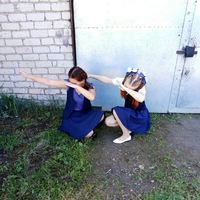
НАПИСАТЬ В МОЛЕКУЛЯРНОМ И ОНООМ ВВДИДЕ HCL+CU(O)
 0
0
 0
0
Ответы на вопрос
 Внимание! Ответы на вопросы дают живые люди. Они могут содержать ошибочную информацию, заблуждения, а также ответы могут быть сгенерированы нейросетями. Будьте внимательны. Если вы уверены, что ответ неверный, нажмите кнопку "Пожаловаться" под ответом.
Внимание! Ответы на вопросы дают живые люди. Они могут содержать ошибочную информацию, заблуждения, а также ответы могут быть сгенерированы нейросетями. Будьте внимательны. Если вы уверены, что ответ неверный, нажмите кнопку "Пожаловаться" под ответом.

2H(+) + 2Cl(-) + CuO =
Cu(2+) + 2Cl(-) + H2O
2H(+) + CuO = Cu(2+) + H2O
 0
0
 0
0

Molecular and Ionic Equations for HCl and Cu(O)
To write the molecular and ionic equations for the reaction between HCl (hydrochloric acid) and Cu(O) (copper(II) oxide), we need to determine the products formed when these substances react.
The molecular equation for the reaction between HCl and Cu(O) is as follows:
HCl + Cu(O) → CuCl2 + H2O
To write the ionic equation, we need to break down the reactants and products into their respective ions. The dissociation of HCl and Cu(O) in water is as follows:
HCl (aq) → H+ (aq) + Cl- (aq) Cu(O) (s) → Cu2+ (aq) + 2 OH- (aq)
The ionic equation for the reaction between HCl and Cu(O) is:
H+ (aq) + Cl- (aq) + Cu2+ (aq) + 2 OH- (aq) → Cu2+ (aq) + 2 Cl- (aq) + 2 H2O (l)
Please note that the reaction between HCl and Cu(O) may not occur under normal conditions. Copper(II) oxide is not readily soluble in water, and the reaction may require additional conditions or reagents to proceed.
 0
0
 0
0
Топ вопросов за вчера в категории Химия
Последние заданные вопросы в категории Химия
-
Математика
-
Литература
-
Алгебра
-
Русский язык
-
Геометрия
-
Английский язык
-
Химия
-
Физика
-
Биология
-
Другие предметы
-
История
-
Обществознание
-
Окружающий мир
-
География
-
Українська мова
-
Информатика
-
Українська література
-
Қазақ тiлi
-
Экономика
-
Музыка
-
Право
-
Беларуская мова
-
Французский язык
-
Немецкий язык
-
МХК
-
ОБЖ
-
Психология
-
Физкультура и спорт
-
Астрономия
-
Кыргыз тили
-
Оʻzbek tili




















